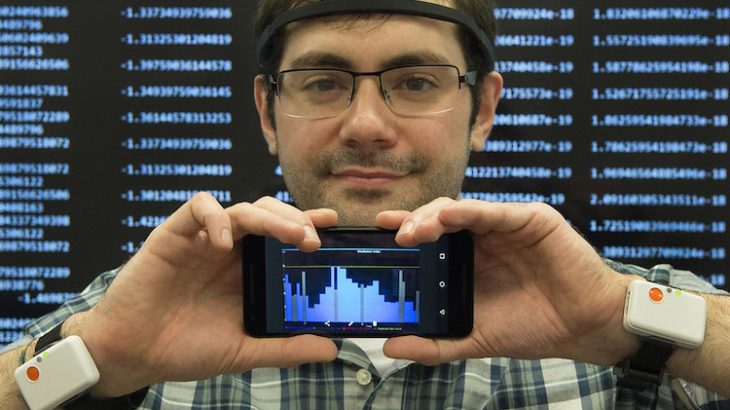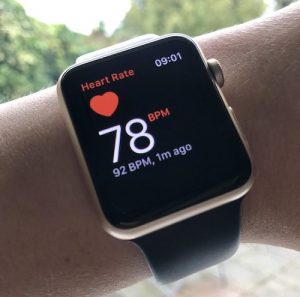Smruthi Venkateshan, guest contributor, in collaboration with the Science Borealis Blog editors
The wearable technology industry is projected to grow to $54 billion USD by 2023, with a compound annual growth rate of 19 per cent, according to Global Data forecasts. A subset of the wearable technology industry is known as healthcare wearables.
These fall into two broad groups: personal and medical-grade monitoring. The former is used by individuals to quantify and monitor a personal health regime while the latter may be used to evaluate the effectiveness of medical therapies and monitor chronic conditions.
What are healthcare wearables and what do they do?
A healthcare wearable is a small device that monitors some aspect of your body or its movement that can be used to infer something about your health. Healthcare wearables range from consumer devices, like Fitbit and smartwatches, to FDA-approved devices. Wearable technology uses Wi-Fi to send health information between devices (for example, your Fitbit and your smartphone) or between the device and healthcare providers and their patients (with the appropriate secure app).
With personal healthcare wearables, you can closely monitor your level of physical activity and sleep patterns. This includes the number of daily steps, distance walked, calories burned, hours of sleep and restlessness, and heart rate. For example, the popular personal healthcare wearable Apple Watch tracks your fitness and workouts, monitors your sleep and heart rate, gets warnings about abnormal heart rates, and measures the electrical activity of your heartbeat (electrocardiogram). These data are summarized with an accompanying app and can give you some idea of your overall health.
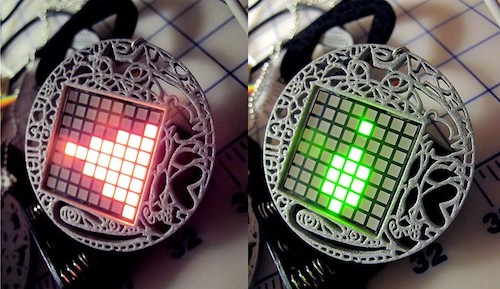
An EEG-visualizing pendant – it monitors and visualizes electrical activity in the brain – was developed by Rain Ashford. Photo by Rain Ashford CC BY NC
With the medical healthcare wearables, you can monitor your ongoing illness. The Current is a medical device that tracks pulse, respiration, oxygen saturation, body temperature, and how much the wearer moves around. Other devices can be used to monitor heart disorders by taking electrocardiograms regularly and reporting any irregularities or measure skeletal muscle contractions that gives the wearer feedback on their posture.
There are devices that can be used to deliver exercise programs to stroke survivors. By using these healthcare wearables, the patient can be moved out of a hospital or supervised medical environment freeing up these resources for more serious cases.
There are also healthcare wearables that can assist the wearer with mental health. The Moodmetric is a mood ring that measures stress levels using electrodermal activity. The MUSE, a Canadian-built headband, provides biofeedback to help guide meditation for stress relief.
How do healthcare wearables motivate and guide user behavior?
To make sure that personal healthcare wearables are adopted by consumers and produce changes in their behavior, user design experts consider several cognitive principles when designing wearables. Medical healthcare wearables have a built-in motivator – use the device properly or risk severe illness or death.
For a healthcare wearable technology to successfully perform its function, the user needs to wear and use it every day. This results in habit formation and behaviour change.
Habits are automatic actions that are prompted by mental context-action associations (think about it-do it). Behaviour is a consequence of impulses that require very little thought, awareness, control, or intention.
So, if you routinely put on your healthcare wearable (habit) and respond to its prompts (behaviour), your goal-directed behaviour (monitoring your health) becomes automatic (you don’t even think about it).
Operant conditioning can help promote beneficial behaviour. This is the process of reinforcing a particular behaviour through consequences. In the context of personal healthcare wearables, this means rewarding “good” behaviour such as reaching your daily step goal or reaching walking milestones.
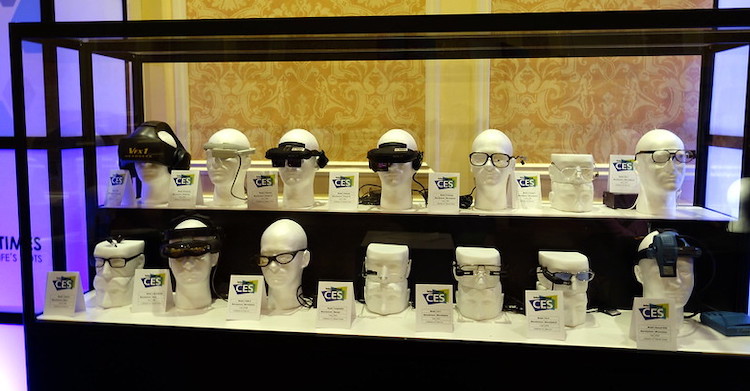
Google Glass and other wearable-tech eyewear were introduced in 2014 but didn’t gain widespread uptake. Photo by David Berkowitz CC BY
Some personal healthcare wearables rewards award digital badges, provide progress graphs, or share your achievements with your community. Active feedback from the device, such as calories burned, steps taken, distance travelled, or stairs climbed help motivate users to engage in the activity to reach their daily goals.
Friendly competition motivates some personal healthcare wearable users. Competitive people either need to win or a reason to improve their performance. The apps that come with the wearables allow you to create online communities. This means that you can see (some of) your friends’ data and compete with them to see who walks the greatest number of steps, spends the most time working out, and more.
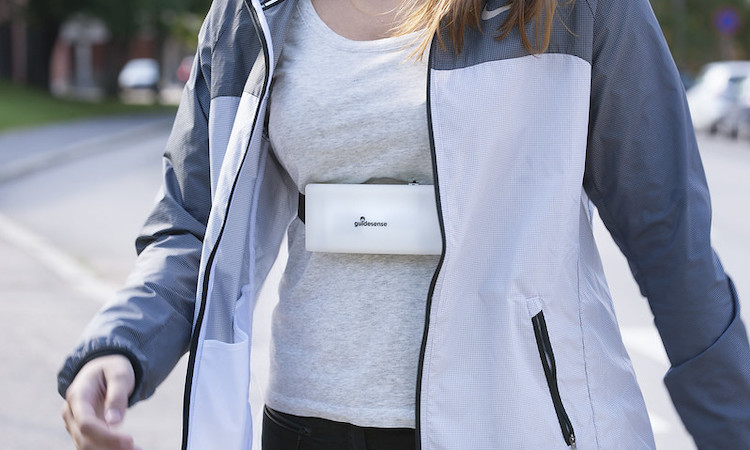
Guide Sense wearable sensor device helps visually impaired to sense their environment, developed (and photo) by VTT Technical Research Centre of Finland CC BY NC ND
Familiarity promotes user adoption of new technology. If the new technology looks “familiar” or works in a similar way to a known technology, the user only has to make minor changes in their behaviour. For example, users quickly adopted smart watches because it was easy for them to make the switch from wearing a traditional watch to a smart watch. Once wearing the smart watch becomes routine, the device can be used to help the wearer form healthier habits by providing cues (reminders) that triggers a beneficial response.
The future of wearables
Healthcare wearables are constantly evolving. Personal healthcare wearables allow people to improve their overall health by monitoring an increasing number of key body functions and their sleep patterns. Medical healthcare wearables allow for increasingly sophisticated health monitoring, such as a fall prevention protocol, dramatically changing how professional healthcare is delivered.
But whether or not they are successfully adopted will hinge on their ability to engage the user. And this depends on a better understanding of psychological principles of product engagement and acceptance, habit formation, and behaviour modification and motivation.
~30~
IBM-Pfizer collaborated to develop a monitoring system to help support patients with Parkinson’s disease. Photo by IBMphoto24 CC BY NC ND

